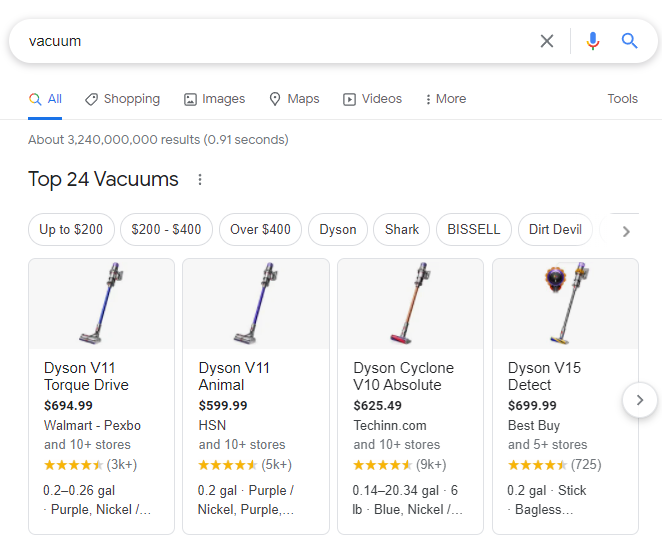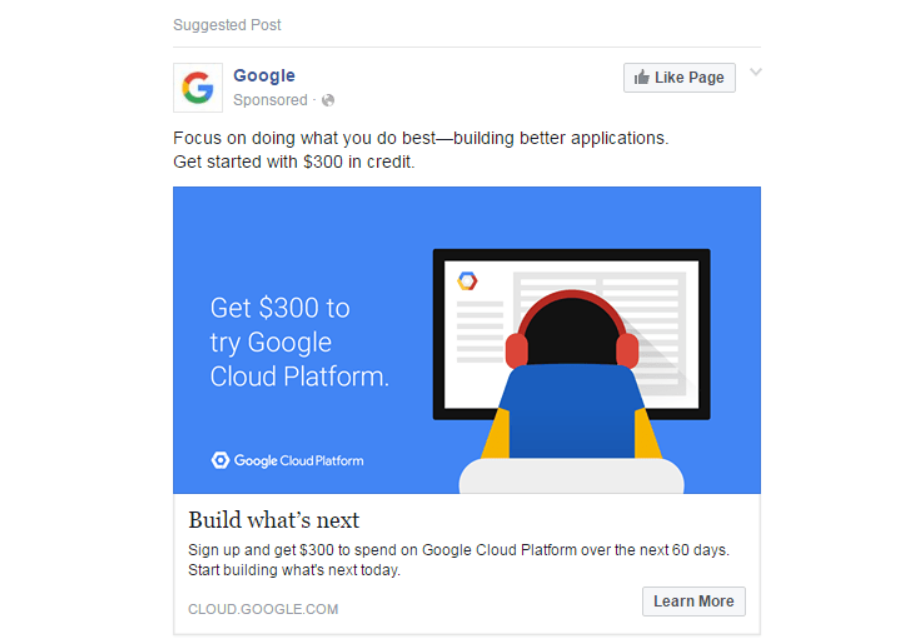The 8 Main Types of Online Advertising

Online advertising, also known as web advertising or internet advertising, is a marketing strategy that uses the Internet as a channel for sending promotional messages to consumers. The 8 main types of online ads include product listing ads, display ads, demand-side platform ads, affiliate ads, native ads, social media ads, video ads, and email ads.
While online advertising is a highly cost-effective way to attract customers to your site, if you’re just getting started, you can get overwhelmed by the overload of options. That’s why we’ve decided to break down every kind of advertising in this article - from how they work to their unique advantages. Read on to figure out what kind of online ads are best suited for your business.
Related article:
What is Return on Ad Spend? Calculating ROAS, CPA, and ROI
What are Display Ads? Display Ads for Beginners
Table of Contents
1. What is Online Advertising?
Online advertising, also called internet advertising, web advertising, or digital advertising, refers to ads that appear on websites or in emails.
Unlike analog advertisements, online ads allow you to target a specific demographic, such as a certain generation, gender, geographic region, or base targeting on historical data like past activity. Online ads are also interactive, meaning that the user can respond to an ad through actions such as clicking and visiting your site.
Another feature of online advertising is that you can easily track metrics and determine the effectiveness of each ad campaign. With this wealth of data, you can analyze the result in-depth each time and identify potential areas for improvement, to continually optimize your ads. And though it’s a recent development, optimization through AI machine learning is also possible these days, and you can program an ad to automatically choose images and generate copy with impressive accuracy.
2. Product Listing Ads
Product listings ads (PLA) or shopping ads are ads that appear on a search engine when you look up a physical product. These are PPC (pay-per-click) ads, which means you only have to pay for the number of clicks you received on the ad, and not for the number of times it’s viewed. Below is an example that showed up on Google when I tried searching “vacuum.”

As you can see, each listing is labelled clearly “Ad,” which makes the click-through rate lower than organic search results. However, if your website is still new and you aren’t seeing results from SEO yet, product listing ads are a great alternative for getting immediate traffic to your site.
What is the difference between product listing ads and regular Google ads?
It can get confusing since there’s two kinds of ads you can set up with Google AdWords. But essentially regular Google ads can be used by all types of businesses,
Advantages of product listing ads:
- A good way to quickly increase your web traffic if your site is still relatively new and you aren’t seeing results from SEO yet
Disadvantages of product listing ads:
- Listings will be labeled clearly as “Sponsored,” making the click-through rate (CTR) lower than organic search results
3. Banner Ads
Banner ads, also known as display ads, have been around for a very long time. This is a type of advertising in which a predetermined space on a website is purchased, as “online real estate” for placing one’s ad. The goal of display ads is to get more brand exposure, and is ideal for attracting new customers that have not yet heard of the product.
Banner ads can also be used for retargeting campaigns, in which you set your ads to show up on the screens of users who have already visited your site, in order to bring them back and further encourage a purchase. You can also set banner ads to be shown to specific demographics, segmenting by gender, age, or region, and choose the time of day for these ads to appear.
Below is an example of a banner ad that popped up in the middle of a Forbes article, promoting a company called Gujarat’s Global Summit (it makes sense that it was targeted to me as I work internationally in Asia).

Advantages of banner ads:
- Highly customizable in terms of shape, size, placement, and type of content (plain text, image, animation or video)
- Through the Google Display Network, you have easy access to millions of sites from your Google ads account
Disadvantages of banner ads:
- The internet is oversaturated with banner ads, so people tend to ignore them, resulting in a low click-through rate (CTR)
- Ad-blockers can prevent users from seeing your ads in the first place
- The cost of the ad space can be expensive
4. Demand-side platforms (DSP)
A demand-side platform (DSP) is a tool used by businesses to bid on ad space in real-time, and purchase mobile, search, and video ads from a single marketplace. So rather than going to individual vendors like Google Ads to buy ad inventory, you can instead buy ads from multiple channels all in one place.
Demand-side platforms also incorporate a method called “programmatic advertising,” in which the ads that you purchase are published contextually based on a complex algorithm. You’ll set your advertising budget and main target ahead of time, and then when users visit a site, the algorithm determines which ads to show them in real-time, through a “bidding war” between you and other brands competing for the same audiences.
Advantages of DSP:
- Considerable data can be gathered about the users who click on your ads, since DSP platforms are often partners with third-party data providers
- Enhanced targeting with the help of the algorithm (which means more conversions as well!)
Disadvantages of DSP:
- High initial investment, since you have to integrate a new DSP tool
- DSP tools can be too complex for some, and there is a high entry-barrier in terms of learning how to fully utilize them
5. Affiliate ads
Affiliate ads, or more broadly speaking - affiliate marketing - refers to when a website promotes another business’s ads in exchange for commission on every acquired lead that turned into an actual sale.
Advantages of affiliate ads:
- ROI is high since the advertising company typically only pays for ad traffic that turn into sales
- You can set the terms for your affiliate marketing program, like how commission will work and how much you want to pay
- Great for reaching a specific audience if you choose a blog or media site that is popular within your target niche
Disadvantages of affiliate ads:
- Less control over branding and creative aspects, as much is left up to the affiliate
- A lot of work and planning is required to startup an affiliate program (like drafting contracts with clear terms and conditions)
6. Native ads
Native ads match the look and feel of the websites they’re placed in, thereby not standing out as typical ads would, and instead flow cohesively with the rest of the web page’s design. Examples include sponsored search results on Google, that line up with the rest of the results, and social media ads like on the Instagram story, which you might watch a few seconds in since they appear like normal stories at first. It should be noted, though, that there still has to be a clear label informing the user that this is an ad, like we can see in this example of the Google ads that show up when I search “web design services.”

Advantages of native ads:
- Non-disruptive to users, as compared to pop-ups or distracting banners
- Media publishers can earn money from ads on their site without sacrificing the design or user experience
- Native ads work against digital fatigue or the reality that consumers are tuning out from traditional ads, and according to Outbrain, users look at native ads 50% more than banner ads, thereby promising more exposure and a higher click-through rate
Disadvantages of native ads:
- The price for native ads is considerably high
- You have to find media sites whose design matches your brand, limiting your options of places to advertise on
7. Social media ads
From Tiktok to Reddit, social media platforms offer perfect conditions for advertising. For example, with Facebook ads, you can choose your audience by age, gender, education, job title, location, interests, and even past purchases, enabling you to reach your ideal customers with a message tailored to them.
To maximize your ROI from social media ads, I recommend you conduct A/B testing with short campaigns on the different platforms to see which channels your audience likes to engage with most. Then, zone in and focus on the winning channel.
Below is an example of Google’s Facebook ad (you can tell it’s an ad because of the “Sponsored” label) promoting the Google Cloud Platform. This is a great example to reference, since the graphic design matches perfectly with the Google brand, and the site that opens up has the same visual continuity. Also, the ad promises $300 in credit when you get started, giving the viewer a clear reason to click.

Advantages of social media ads:
- Depending on the platform, these can be relatively affordable
- Easy to target the exact audience you want to visit your site
- Through sharing and likes, ads on social media can spread naturally as well
Disadvantages of social media ads:
- Users can leave negative feedback, thereby hurting other users’ impression of your brand
8. Video ads
Typically when we refer to video ads, we mean video content that plays on video-sharing sites like YouTube. YouTube ads are generally paid for on a cost-per-view basis. Each view costs somewhere between $0.10 ~ $0.30 depending on your target industry and keywords. Also, if you set a maximum budget, then you’ll only be charged that much, and you can never go over.
The most common type of YouTube ads are called “TrueView In-Stream Ads.” These are the skippable commercials that play before the main video starts. Advertisers only have to pay for these ads when the user has watched for 30+ seconds or clicked on the ad and opened a URL.
There’s also another type of In-Stream ads that are unskippable and play before, in the middle of, or after a video that is 10 minutes or longer. These ads are paid for on a PPC basis, so you’ll want to offer an enticing CTA to get as many conversions as possible.
Advantages of video ads:
- Since you generally pay on a CPC basis, In-Stream ads are very cost-effective (and even if your ad gets skipped, you can still get a few seconds of brand exposure!)
- Plenty of opportunities to be creative and stand out from other ads with video content
Disadvantages of video ads:
- You don’t get to choose what videos your ads get played next to, and in the past, there’s been controversy over ads playing next to hate speech and terrorist content
- If your video ad can be skipped in 5 seconds, it’s challenging to get your message across in time
9. Email ads
There are two common methods for advertising with email. One is to insert banner ads and links in the header or footer of email newsletters, and the other is to have users register their preferences, and then send advertising emails that match those preferences.
Advantages of email ads:
- Does not cost anything to send via email
- Since the email is stored on the device, the ad will not disappear as long as the email remains
Disadvantages of email ads:
- Email ads often have a low click-through rate since it’s difficult to get customers to open a promotional message in the first place, and even harder to get them to click on the ad if it’s not specifically relevant to their needs
10. Summary
In this article, we introduced the 8 of the most popular types of online advertising: product listing ads, display ads, demand-side platform ads, affiliate ads, native ads, social media ads, video ads, and email ads. While we only went over the main types briefly this time, stay tuned for more in-depth blogs about each channel.
And as a final piece of advice, when choosing an advertising medium, the best thing to do is to define your target audience, advertising budget, and research which channel your audience is likely to be most active on, and base your decision on this. Every business and customer base will be totally different, so you really have to find the medium that works best for you and your current situation.

.jpg)
.jpg)
.jpg)


